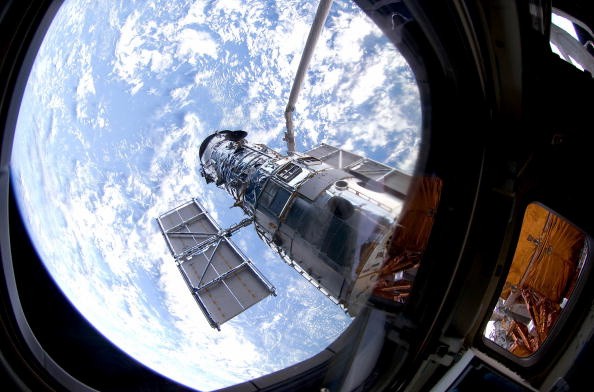The Hubble Space Telescope might be old and due for retirement, but it's still making some amazing discoveries. This one is no different and perhaps one of the most amazing in the telescope's legendary career.

According to The Washington Post, Hubble managed to see what could be the farthest star ever discovered: Earendel, a star located around 12.9 billion light-years away. To date, no star is situated further than Earendel, and it is considered one of the biggest discoveries made by Hubble to date.
A study published in the journal Nature sheds a bit more light (pun intended) about the star. Earendel is described as around 50 to 100 times bigger than our own Sun, and is also so old that its light first shone into the darkness merely 900 million years after the birth of the universe. In the cosmic timeline, 900 million years is only a tiny fraction of time.
However, the astronomers who discovered Earendel are also debating amongst themselves whether the star has a black hole in its core. But for this to be confirmed, they'll have to enlist the help of the Hubble Space Telescope's heir apparent, the James Webb Telescope.
Just How Far Is Earendel From Earth?
12.9 billion light-years is a number so huge, it is difficult to understand. You should know that the light-year measurement was actually made by astronomers to describe distances so vast, they don't make sense as mere numbers.
But here's a bit of context for you. That number of 12.9 billion light-years basically means that Earendel's light took that much time to reach Hubble's "light bucket." Light is the fastest thing in the known universe, and for it to take almost 13 billion years (almost as long as the universe itself has existed) to reach the Hubble Space Telescope's lenses is an insane thing to think about.

What this also means is that Earendel is among the oldest things ever discovered. Since its light took that long to reach us, what the astronomers saw on Hubble is actually what the star looked like 13.9 billion years ago. Quite simply, it is a literal, albeit indirect exhibition of time travel-one which could further unlock the universe's secrets.
Beating Records-But How Long Will It Last?
The discovery of Earendel smashes the previous record-holder, and it wasn't even close. According to PBS, the record used to belong to the star Icarus, which is located 9.4 billion light-years away. Icarus was another star spotted by Hubble during its 32-year-long career.
But that career looks to be coming to an end, if you've been following Tech Times' recent coverage about Hubble. The iconic space telescope has had multiple troubles in the past few years, punctuated by a lengthy period of being offline that had NASA turning to the telescope's backup computer just to make it work.
Nevertheless, Hubble's hardware-including its cameras-will keep working for as long as it is needed. Even if NASA has already launched the James Webb telescope, old man Hubble will still be looking at the stars until it couldn't do it anymore.

Related Article : NASA Hubble Space Telescope Snaps Photo of a Spiral Galaxy Using Two Different Cameras
This article is owned by Tech Times
Written by RJ Pierce
ⓒ 2025 TECHTIMES.com All rights reserved. Do not reproduce without permission.




